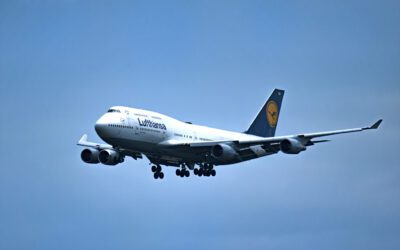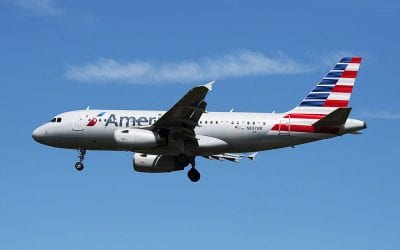As the National Transportation Board (NTSB) and the Federal Railroad Administration (FRA) have learned more about the Amtrak Train 188 derailment, the FRA has already begun to require Amtrak make changes in its safety systems, but there appears to be other commonsense improvements Amtrak and FRA should at least consider implementing which can save many lives in a train accident.
The FRA has responded to the accident by ordering Amtrak to significantly improve safety along the Northeast Corridor, on which an average of about 32,000 passengers ride daily plus more passengers from other railroads, such as New Jersey Transit, and SEPTA.
Specifically, FRA ordered Amtrak to identify every curve on the Northeast Corridor where train speeds must be reduced by more than 20 mph prior to entering the curve. Amtrak stated it completed the list.
The order gives Amtrak 20 days to submit an action plan to FRA, delineating, with target implementation dates, appropriate modifications to Amtrak’s automatic train control system (ATC), and other signal systems to enable warning and enforcement of passenger train speed limits at the curves.
The order also requires Amtrak to install new signage for engineers and conductors indicating maximum speed limits through the Northeast Corridor.
Prior to reopening the track between Philadelphia and New York, under an FRA order, Amtrak installed and activated its ATC system northbound at the Frankford Curve, where the Train 188 derailment occurred. Previously it was only implemented southbound.
As I rode on Amtrak between Philadelphia and New York last week, including on the Frankford Curve, I wondered if implementing Amtrak’s ATC system throughout the Northeast Corridor was enough of a safety improvement. I looked at the rail cars, having put down my book, and identified possible problems in case of an accident which might have straightforward solutions for Amtrak and FRA to consider.
Seat belts came to mind:
When we ride in cars or fly in planes we wear seat belts, but Amtrak doesn’t have seat belts in its passenger rail cars. Could the passengers killed in Train 188’s accident have been saved if they were belted?
A 2007 published report on a five-year study by Britain’s Rail Safety and Standards Board concluded seat belts for train passengers wasn’t a good idea.
They found simple lap belts would result in more harm to passengers than no belt at all. They found while three-point seat belts would be helpful in reducing passenger injuries, the belts required highly rigid seats or they would fail, and those seats would increase the risk of injury to anyone not belted.
The report also stated,
“Crucially, restraining passengers in their seats would prevent passengers being thrown clear of structural intrusion and would be likely to lead to fatalities where current practice [no seat belts] would likely have prevented them.”
Another 2007 paper, from the Transit Cooperative Research Program, examining the International Transit Studies Program, looked at the potential for seat belt use.
According to the experts, “Seat belts do not seem to be practical.”
The reports came to their conclusions in large part because the forces and their direction in accidents of airplanes and automobiles are somewhat predictable, allowing a seat belt design which can reliably save most passengers, while in train accidents they are far less predicable and therefore don’t allow for a design which could save passengers with any reasonable dependability.
It was also pointed out that in rail cars there are a myriad of possible passenger configurations with many passengers up and about during their trip, unlike in cars, where everyone is seated during the trip and generally facing forward at all times, and in planes, where most everyone is seated at any time during the flight, and all face forward when seated.
Having read both papers I think their conclusions are correct, and rail passengers would not generally benefit from seat belts in Amtrak trains.
Train 188 passenger stories of flying luggage came to mind:
In airplanes, carry-on luggage and other belongings in the cabin generally must be stowed in overhead bins with doors, or tucked under the seat in front of us. On Amtrak’s high speed Acela train, the overhead bins are enclosed with doors like planes, but on most Amtrak trains, the overhead bins are like the planes of the 1960s, merely open shelves. In case of an accident the doors prevent luggage in overhead bins from hurling around the cabin, injuring passengers.
All Amtrak rail cars should have fully enclosed overhead bins, like those already installed on Acela. Luggage storage areas and shelves for full sized luggage should be enclosed, too. This will prevent luggage and other belongings from becoming deadly missiles in case of an accident.
As I used the cafe car and lavatory, their dangers came to mind:
Some Amtrak rail cars have tables between seating. All have lavatories with stainless steel sinks and shelves and other hard edges. Cafe cars have tables and a counter with moveable equipment.
Tables, cafe counters and lavatory sinks have hard, strong edges which are dangerous in an accident. Each needs to be equipped with crushable edges to reduce impacts on passengers’ heads and bodies. Cafe car equipment which might fly around in an accident must be restrained, similarly to how galley equipment is restrained on airplanes.
(Image: Amtrak Acela train car. Copyright © 2015 NSL Photography. All Rights Reserved.)
After many years working in corporate America as a chemical engineer, executive and eventually CFO of a multinational manufacturer, Ned founded a tech consulting company and later restarted NSL Photography, his photography business. Before entering the corporate world, Ned worked as a Public Health Engineer for the Philadelphia Department of Public Health. As a well known corporate, travel and wildlife photographer, Ned travels the world writing about travel and photography, as well as running photography workshops, seminars and photowalks. Visit Ned’s Photography Blog and Galleries.



